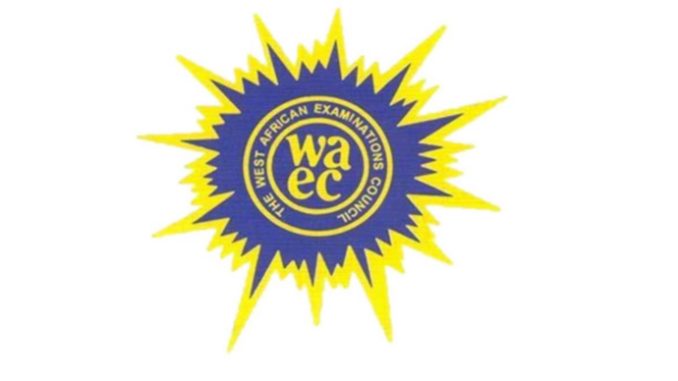
OFFICE PRACTICE OBJ
01-10: DAAABBDDBC
11-20: ACBCDBABBB
21-30: CCDBADADDA
31-40: CBCAABDCCA
41-50: BDABCACDCD
=================
COMPLETED ✅
••••••••••••••••••••••••••••••••••
Don’t come here for free answer next time we post this just to make you confirm
That we are 100% Guaranty if you want to subscribe to us kindly click below link to subscribe
Subscribe For 2024 Waec Examination Question And Answer
Subscribe For 2024 Waec Examination Question And Answer
Subscribe For 2024 Waec Examination Question And Answer
*OFFICE PRACTICE*
(1a)
Mr. Alfred called an Emergency meeting.
The meeting is to address the workers’ grievances. An emergency meeting is convened promptly to discuss urgent matters that require immediate attention. In this case, the issue of salary cuts and workers’ dissatisfaction required urgent resolution.
(1b)
Miss Bukky Josephine played the role of a secretary at the meeting by taking minutes of the meeting.
(1ci)
The committee headed by Mr. Brown is a fact-finding committee.
(1cii):
(i) Summary of Incident
(ii) Investigation Findings
(iii) Root Causes Analysis
(iv) Recommendations
(v) Action Plan
(1d)
The company likely operates a centralized filing system where documents from various branches are kept centrally.
(1e)
(PICK ANY THREE)
(i) Miss Bukky Josephine is responsible for overseeing the recruitment process, which involves sourcing, screening, and selecting candidates for employment
(ii) Miss Bukky Josephine plays a crucial role in managing employee relations within the company.
(iii) Miss Bukky Josephine oversees employee training and development initiatives aimed at enhancing the skills, knowledge, and competencies of the workforce.
(iv) Miss Bukky Josephine is responsible for designing, implementing, and managing the company’s compensation and benefits programs.
(v) Miss Bukky Josephine plays a key role in developing and implementing HR policies and procedures that govern various aspects of employment, such as attendance, leave, code of conduct, and workplace health and safety.
=================================
••••••••••••••••••••••••••••••••••
Don’t come here for free answer next time we post this just to make you confirm
That we are 100% Guaranty if you want to subscribe to us kindly click below link to subscribe
Subscribe For 2024 Waec Examination Question And Answer
Subscribe For 2024 Waec Examination Question And Answer
Subscribe For 2024 Waec Examination Question And Answer
(2a)
An open office is a layout design for workplaces that features a large, open space without the traditional barriers of cubicles, walls, or private offices. It emphasizes collaborative work and fosters a sense of transparency, accessibility, and communication among team members.
(2b)
(PICK ANY FOUR)
(i) Collaboration: The open layout encourages spontaneous interactions and promotes teamwork, making it easier for employees to collaborate on projects and share ideas.
(ii) Communication: With fewer physical barriers, communication flows more freely, allowing employees to quickly discuss issues, exchange feedback, and stay in touch with colleagues.
(iii) Flexibility: Open offices are versatile, accommodating different work styles and allowing for easy reconfiguration of space to meet changing needs.
(iv) Transparency: The openness of the office space promotes transparency, as managers and employees can see and be more aware of each other’s activities, fostering a sense of accountability and trust.
(v) Innovation: The collaborative nature of open offices enhances innovation by facilitating brainstorming sessions, knowledge sharing, and cross-departmental collaborations.
(vi) Employee well-being: Open offices often prioritize the well-being of employees by providing natural light, comfortable working areas, and spaces for relaxation and socialization, leading to increased job satisfaction and productivity.
(2c)
(PICK ANY THREE)
(i) Efficiency: This leads to increased efficiency and productivity in performing tasks.
(ii) Compliance: They provide guidelines for handling sensitive information, maintaining confidentiality, and adhering to ethical standards.
(iii) Training and Onboarding: This ensures a smooth onboarding process and reduces the learning curve.
(iv) Risk Management: This reduces potential risks and liabilities for the organization.
==========================================
(3a)
(PICK ANY FIVE)
(i) File Cabinets
(ii) Filing Trays
(iii) Ring Binders
(iv) Hanging File Folders
(v) Index Cards l
(vi) Labeling Systems
(3b)
(PICK ANY TWO)
(i) Internal Mail: Internal mail refers to the delivery of mail and documents within an organization
(ii) External Mail: External mail refers to the delivery of mail and packages to recipients outside of the organization.
(iii) Electronic Mail (Email): Email is a common method of communication and document delivery within organizations. It allows for instant and secure transmission of messages and attachments electronically.
(3c)
(PICK ANY THREE)
(i) Document and Information Retrieval: Filing enables easy and quick access to important documents and information whenever needed.
(ii) Record-keeping and Compliance: Filing helps organizations maintain accurate and up-to-date records of their activities, transactions, and legal obligations.
(iii) Documentation of Processes and Procedures: Filing allows organizations to document processes, procedures, and work instructions.
(iv) Auditing and Accountability: Filing provides a basis for internal and external audits, allowing for the verification of records and transactions.
=====================================
••••••••••••••••••••••••••••••••••
Don’t come here for free answer next time we post this just to make you confirm
That we are 100% Guaranty if you want to subscribe to us kindly click below link to subscribe
Subscribe For 2024 Waec Examination Question And Answer
Subscribe For 2024 Waec Examination Question And Answer
Subscribe For 2024 Waec Examination Question And Answer
(6ai)
(i)Cash payment.
(ii)Cheque payment.
(iii)Bank transfer.
(iv)Credit card payment.
(6aii)
(i)Cash payment is the most direct method where physical currency is handed over to complete a transaction.
(ii)Cheque payment, which uses a written, dated, and signed instrument that directs a bank to pay a specific sum of money to the bearer or a designated person.
(6b)
(i)Sorting Table: A large, sturdy table is crucial for organizing and sorting mail. It provides a dedicated space for the mail clerk to categorize incoming and outgoing mail according to different departments, urgency levels, or any other criteria set by the company.
(ii)Postal Scale: A postal scale is necessary to determine the weight of mail items accurately. This is especially important for outgoing mail, as it helps in calculating the correct postage required, thereby avoiding overpayment and ensuring compliance with postal regulations.
(iii)Franking Machine: This device is used to automatically print postage onto envelopes or labels for outgoing mail. A franking machine can speed up the process of preparing mail, offer postage discounts, and add a professional touch to the company’s correspondence.
(iv)Mail Carts:Mail carts are used for transporting sorted mail from the mail room to different departments or mail stations within the company. They help in reducing the physical strain on the mail clerk and minimize the risk of mail being lost or misplaced during distribution.
Bonuses
(4a)
(PICK ANY FOUR)
(i) Increased efficiency: Office equipment such as computers, printers, and scanners help streamline workflow processes, allowing tasks to be completed more quickly and efficiently.
(ii) Enhanced communication: Office equipment like telephones, email systems, and video conferencing tools facilitate communication both within the organization and with external stakeholders, improving collaboration and decision-making.
(iii) Improved organization: Equipment such as filing cabinets, label makers, and document management systems help keep information and resources organized, reducing clutter and making it easier to locate important documents.
(iv) Cost savings: While there is an initial investment in office equipment, over time, it can lead to cost savings through increased productivity, reduced reliance on manual processes, and better resource management.
(v) Professionalism: High-quality office equipment helps create a professional image for the company, instilling confidence in clients, customers, and business partners. Well-maintained equipment reflects positively on the organization’s reputation and credibility.
(vi) Flexibility and Adaptability: Modern office equipment is often versatile and adaptable to various tasks and environments. For example, multifunction printers can scan, copy, and print, providing flexibility to meet diverse office needs without requiring multiple devices.
(4b)
(i) Board meetings: Board meetings are typically held by the board of directors to discuss and make decisions on matters related to the organization’s overall strategy, financial performance, governance, and major policies.
(ii) Staff meetings: Staff meetings are gatherings of employees within a department or across departments to discuss day-to-day operations, projects, goals, and challenges.
(iii) Management meetings: Management meetings involve senior executives and department heads discussing strategic initiatives, resource allocation, performance metrics, and operational issues.
(iv) Committee meetings: Committee meetings bring together individuals from different areas of the organization to work on specific projects, address particular issues, or oversee ongoing activities. Examples include finance committees, audit committees, and safety committees.



Leave a Reply